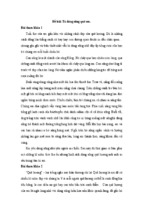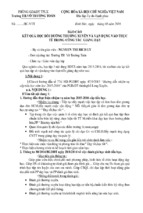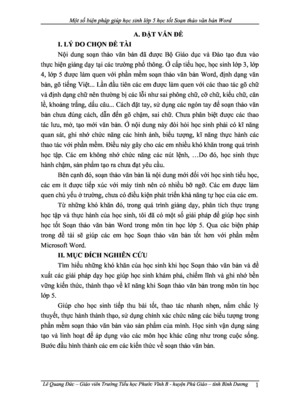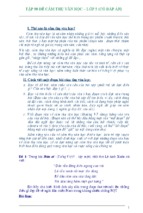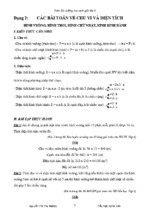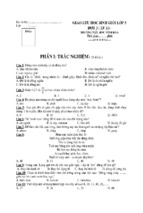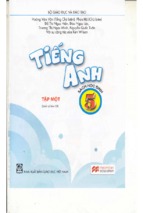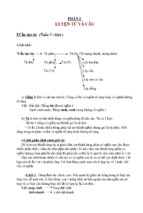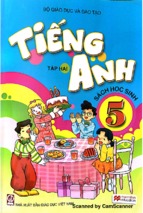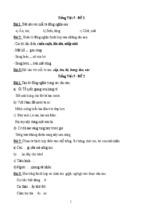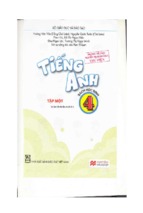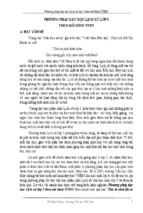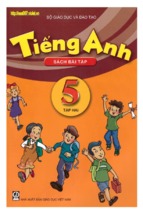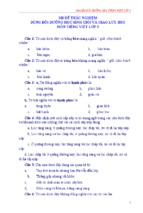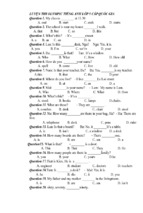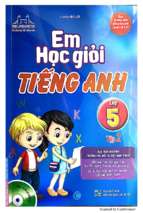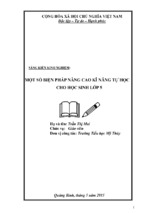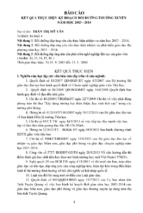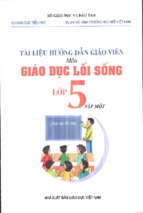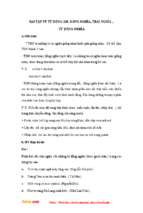ritino
Composition
Louis Fidge
N SATILAMAZ
~ or ~OR
ri
"·· 4' E
.
t:
y .
,
SATILAMAZ
NOT FOR v ..~"
c
r,
<-'!..~ : . ~,:,
~:.
" '.'
.:
z·:! ,·.·
i"
~
MACMILLAN
. ...
.
.
.~
Contents
Page
Skills, scope and sequence
Introduction
IV
VI
Unit 1
Punctuation practice (1) - Paragraphs
2
Unit 2
Nonsense rhymes
4
Unit 3
Writing an adventure story
6
Unit 4
Autobiographical writing
9
Unit 5
Punctuation practice (2) - Speech marks
12
Unit 6
Writing poems to make you think
14
Unit 7
Writing biographies
17
Unit 8
Improving stories
20
Unit 9
Handwriting practice
23
Unit 10
Punctuation practice (3) - Brackets
25
Unit 11
Writing a poetry review
27
Unit 12
Writing from a character's point of view
30
Unit 13
Writing letters for different purposes
33
Unit 14
Writing a playscript
36
Unit 15
Punctuation practice (4) - Hyphens and dashes
39
Unit 16
Flashback
41
Unit 17
Using descriptive language
43
Unit 18
Persuasive writing
46
Unit 19
Journalism
49
Unit 20
Ideas for writing stories
52
Steps to help you write well
55
Editing checklist
56
Handwriting checklist
57
kills, Scope and Sequence
Unit 1
Punctuation Skills
Punct uation practi ce (1) - Para gra phs
Understanding concept of paragraphing; composing own
paragraphs of narrative and factual texts
Unit 2
Text Type
Writing Skills
Nonsense rhymes
Nonsen se rhymes
Composing own nonsense rhymes, using given poems as models
Unit 3
Text Type
Writing Skills
W rit ing an advent ure story
Adventure story
Describing settings; planning and continuing story in own wo rds
Unit 4
Text Type
Writing Skills
Autobiogra phical w riting
Ext ract f rom an aut o b iog rap hy
Empath ising with character in autobiography and cont inuing
narrative in own words; composing own piece of autobiographical
writing from pe rsonal experience
Unit 5
Punctuation Skills
Punct uat ion pract ice (2) - Speech marks
Understanding the use of speech marks in dialogue and
punctuating them correctly
Unit 6
Text Type
Writing Skills
W riting poems to ma ke you think
Refl ective poetry
Empathising with an imals' feelings; composing own poem in style
of model poem given; composing own list poem
Unit 7
Text Type
Writing Skills
W riting biographies
Biog ra p hi cal wr it ing
Making notes from a given biographical text; writing biography
from given notes; research ing and wr it ing biography of g iven
character
Unit 8
Text Type
Writing Skills
Improving stories
Fantasy story
Using a given st o ry draft and improving it by giving extra detail,
and describing characters and settings; continuing story in own
words
Unit 9
Handwriting Skills
Handwriti ng practice
Practising joined script; developing a fluent, legible style of
handwriting; using checklist to check standard of own writing
Unit 10
Punctuation Skills
Punctuati on pract ice (3) - Brackets
Understand ing the function of brackets, and using them correctly
IV
Unit 11
Text Type
Writing Skills
Writing a poetry review
Narrative poem/review
Appreciating the use of reviews; composing own review of poem;
composing poster about a poem read
Unit 12
Text Type
Writing Skills
Writing from a charact er's po int of view
Traditional story
Empathising with different charact ers in the story; writing story
from the point of view of specific characters; autobiographical
writing
Unit 13
Text Type
Writing Skills
Writing letters f or dif f erent purposes
Formal and informal letters
Composing formal and informal letters; arguing a case
Unit 14
Text Type
Writing Skills
Writing a playscript
Play
Appreciating the conventions of setting out playscripts (including
stage directions); composing own playscript based on theme of
given play; comp osing another scene for given play
Un it 15
Punctuation Skills
Punctuation practice (4) - Hyphens and dashes
Writing compound words, using hyphens; using dashes correctly
Unit 16
Text Type
Writing Skills
Flashback
Adventure story; science fiction story
Appreciating the technique of using a flashback, i.e. starting a
story with its ending; composing and writing the beginning of a
given story
Unit 17
Text Type
Writing Skills
Using descriptive language
Poetry using similes and metaphors
Appreciating difference between similes and metaphors;
completing given similes in own words; composing own metaphors
Unit 18
Text Type
Writing Skills
Persuasive writing
Leaflet using persuasive writing
Appreciating how and why persuasive writing is used in a leaflet;
designing a badge and po st er, using persuasive writing
Unit 19
Text Type
Writing Skills
Journalism
Report; interview
Appreciating some of the varied purposes writing may be used for;
composing report using own experience or imagination;
composing questions for, and carrying out, an interview
Unit 20
Text Type
Writing Skills
Ideas for writing stories
Fantasy/adventure
Planning and composing stories from selected variables (characters,
places, objects, events)
v
Teacher's Notes
Introduction to the series
The texts
Each book in the series introduces pupils to a wide range of texts and offers structured support in
helping children write for many different purposes. The books include a wide range of writing
tasks including fict ion, poetry and non-fiction . The books are carefully graded and are
increment al in difficulty. The books provide a valuable complement to any other resources or
series currently being used. The fact that each unit is structured in the same way makes the books
accessible and easy to use.
The related activities
The related activities support the development of essential compositional writing skills. They also
focus on the technical side of writ ing, offering focused work on developing punctuation skills.
Develop ing a fluent, leg ible style of handwriting is encouraged throughout the series. The
checklists at the back of the boo k help children to reflect on various aspects of the writing
process, such as planning, drafting, editing etc.
The Skills, Scope and Sequence Chart
The Skills , Scope and Sequence Chart (on pages iv-v) provides an immediate overview of each
book and the skills being developed. This chart is very helpful for planning purposes.
Using the books
To ga in maximum benefit from the books, it is suggested that they are used systematically,
work ing through each unit one at a time, in the given order. However, the books may also be
used f lexibly, selecting units as desired to complement other work being done in class.
Tackling the units
The focus text at the beg inning of all compositional writing units should be read to and with the
closs and d iscussed. Each unit is preceded by an introductory sentence or two which helps direct
attention to key aspects of the text. Ensure pupils have a good grasp of the literal meaning of
the text and any vocabulary they may not have met before when reading the stimulus passages.
The texts have been specially chosen as models, demonstrating particular types of writing. They
are useful for helping children appreciate different types of writ ing, to learn from them and base
their own writ ing on them. Point out and discuss the particular characteristics and features of
each text during class discussions.
Tackling the related activities
The accompanying activities are always divided into two types: a Now try this section and a Next
steps ... section . The Now try this activities refer the child back to the text, checking their
understanding and encouraging them to reflect on the particular characteristics and features of
the different types of t exts introduced . The Next steps ... activities encourage the child to build
on this, by doing some writing based on the text, using it as a model. Often there are further
activities which then ask children to do some independent writ ing based on a similar theme. Each
unit has an accompanying copymaster in the Teacher's Book, which supports or complements the
w ork done in the Next steps ... section. It is suggested that prior to work ing any act ivity there is
some discussion with the pupils to ensure they fully understand what is required of them and can
ga in maximum benefit from each activ ity.
vi
Teaching features of the books
Units of work
Th ere ar e 20 t w o- or three-page units of work . Each composit ional writing un it is stru ctured in
the same way i.e. a stimulus passage of te xt, followed by two different levels of activ ities. Ther e
are also some Punctuation and Handwrit ing Practice unit s whi ch ha ve a similar layout .
Focus section
Intr odu ct ion .
Get s children thi n k in g
about the te xt .
Unit number
and title
Next steps ...
In depen dent writi n g
acti vitie s ba sed on, and
de ve loped from , t he t ext.
p\c r ..... .... ,:
ItI'l ~!'lo'.l .r,'" (
It 'OII t.ol,II 'ot ', I t< f."
Punctuation practice (1) - Parag raphs
;:'I"J t'"
'" -..... I.. ·· lt-< ,l· r f·I':<)'., .
.
I I~
mu, I. ,......- r
.
fl'; tf~ .. ~\ "" l h ~
T,.,...
rl) ... ~ I I' t'
.,..1' ·
• ' 11 t><)\ ' f'NI ~ ' pll:l....
~
" .. '.11" : .. n 'l'r"
' I'tW. ,t lG.t!)
,r
f11m.. ,' · • •·,t
::, ;: :.:.: ";~~8~ ~ t~:: ..b:~OI:::,, ~ :~~~ ,~ c r-~ . _~
,
~ d-.
~-'"-"---~ -=
. -.
paragra ph .\ a grou p o f ~fl n l e n( e1I OOOul o ne m ai n «t ee or topk
.\ I~ f) "'( P ,, 1 ........ '1·"9 1\ ~ \ I ., r 1()
' Nd " " ., d ,v ,tj ;.J ;" 10 /Xl fQl)r o p h \
.,.,. .- ,"". "z· o n ,; ry. t" OPi'
-<'""""'" "'"
0 ....
<1.1 ""':!'. /l u th ,="
t
t" !\
~IE:\
',=- "" t)
' ,- - On
wI t be
0 ..... ,' r k l' P
Sl' ~ s t
11 " ' \ ,n 1!">e ·.....:."11
0-.
t"",ioC"lg ""0' (' I'!<'d rr f" "
'
<
,
" ,r, ( o', tm"", u. In A",. r,co 11\
·'l I'II·r" ~
Th " "-O" H" U 'l" .. d W IU , 1~ ru om s
,J (' n dMl l,lp " .' 1111 60 1 '
t}
p
lJ ~ iort"a s
'"
( 9 ) P I W .. . . t~"1~ 0 1
.l..nc.( nt ( lJ)p t, tJt' il.,tIoIjI l7' d Q IJ" f"~ ~
S
1000'/ rt'l d ' n il' Y (' 0 1 1he- .....e ..,. r, f
n.rl
,"N ' ''' r h\
n~ ('U ~ ~ !I 1f \ I ~ I "')
I"..
~ ~.
.
~ l
.::11 f :,r \
hl\0 9 in c t "'o l you a re- 0 lo n ,..)u~ I!'x or. , . Yo u h o v t'
pl
/
~
IOOJ n d on o ld IreOSOJI ' '!'lOp. VQOJ o rf! o n 0 e e se n Is la n d
(
loo k,n 9 1M \h.. 1 ' ~O \ l.l ' " yo....ha~~ Il , ~ln lh ro l'q h ,o m.. ~O "9t ' (I1I S
( Ou n f ry >N l to a H' po rO't' p n rOljllo p ll C1 bOu~ PUC po rt o f '10<.0 ' 10000 11" 'y
rl
"
4
' .•n q'i an d q "", .~ n \ ..... ,1' l1u" 1'
bl't,;
g
"c.'. tr v uu-, _ _
)l 'c ~ . ~ ~.~ I I
M
t b ese fou r por09 ro s O '~ ,n t he w ro ng
Ord t"r. G.vt'-eecn por ro ph a tit le .
Tn,. h en ~U( l f! %f v l hel
und !1a ....11rrt 1936 , II
(11\
! rop
M ll St
m odern
c rde- Wffl e th e m ,n l"'e C O fr ~ et
t"'"
w os U'"' II
tw o m tor h lodo:~
t,O'.c
,",el l op t .. ' s
~rQ l c r blOd,.
fI, ,. t ' -"ll"'l(lr h .,.,.. l o
- Xem thêm -

